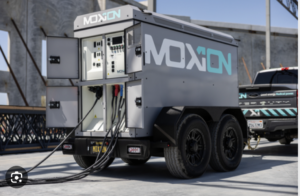Public transportation is going green.
People who want to celebrate Earth Day week by commuting in a vehicle powered by a cleaner-burning fuel should hop on the bus.
More than a third of the nation’s city transit buses are now powered by fuels other than diesel. That’s up from fewer than 10% a decade ago, according to the American Public Transportation Association citing January 2011 data.
That compares with about 9 million passenger automobiles in the USA that ran on alternative fuels in 2010, according to the U.S. Energy Administration; that’s less than 3% of the total.
Transit agencies across the nation, spurred by federal incentives for buying and using greener vehicles and by the potential savings of switching from diesel, are transitioning to buses that run on compressed natural gas, propane, diesel-electric hybrids and biodiesel. In total, there are more than 66,200 city buses in the country.
Many people get their first introduction to alternative fuels via public transit, say industry officials such as Steve Myers, transit director of Lee County Transit in Fort Myers, Fla. About half the agency’s 60 fixed-route buses are diesel-electric hybrids, meaning they run on diesel at start-up, then switch to electric power.
The system has seen a 24% decrease in fuel usage by the hybrids compared with its diesel buses. There has also been a 50% reduction in engine combustion gases and a 90% reduction in particulates, carbon monoxide and hydrocarbons, Myers says.
The system started phasing in hybrids in 2010. “Obviously, there’s always budget pressure, ‘How can we reduce fuel usage?'” he says. “Also, the political will was there for us to make the change, and to spend a little more to obtain air-quality benefits and long-term environmental benefits.”
The hybrids cost significantly more than diesel-powered buses. A 35-foot diesel bus costs $316,188, vs. $549,041 for the basic hybrid package, says Joann Haley, marketing manager at Lee County Transit. “But we recoup that through fuel economy and through reduced brake and engine maintenance,” Myers says.
APTA President Michael Melaniphy says transit agencies are attracted by the long-term economic benefits, by the environmental impacts and by the energy-independence aspect. “Public transit is a good incubator when it comes to alternative fuels,” he says. Some transit agencies were “early adopters” of the fuels, starting about two decades ago, and have demonstrated that they can be used with safety and efficiency, Melaniphy says.
Milo Victoria, CEO and general manager of Omnitrans in the San Bernardino Valley, says the agency began using compressed natural gas in 1997, well before the state began requiring all transit buses to run on alternative fuels in 2005. “There were some unknowns,” he says. “They (alternative fuels) had no track record for service reliability.”
Now, Omnitrans’ 160 buses, which carry 52,000 riders a day, all run on compressed natural gas. Victoria says start-up costs were high, including the costs of building new pumps. He says the agency now pays $1.30 a gallon for compressed natural gas, compared with $4 a gallon for diesel.
John Felmy, chief economist for the American Petroleum Institute, says about 3% of the nation’s transportation industry now runs on compressed natural gas. “Some trucking operations have started to look at this,” he says. “The problem is, it costs a lot to convert a truck, $70,000 to $80,000. What we’ve seen is a slow adaptation.”
He says natural gas is about a quarter of the cost of diesel. “Just about every municipality is trying to use natural gas for their buses, because it’s so much cheaper than diesel,” he says.
Los Angeles’ LA Metro operates the nation’s largest fleet of compressed natural gas buses — 2,200 vehicles, according to APTA.
Transit’s embrace of alternative fuels is helping to build public awareness of the fuels and helping to build out the fueling infrastructure, says Todd Mouw, vice president of sales and marketing at ROUSH CleanTech, a Livonia, Mich., firm that designs and develops propane fuel systems for vehicles.
“You get people riding these buses, and they’re like, ‘Wow, I’m riding a propane bus,'” he says.
The Flint Mass Transportation Authority in Michigan has truly embraced alternative fuels: It has 260 buses; some run on propane, some on compressed natural gas, some on a diesel-electricity hybrid and one on hydrogen. “Our plans call for us to reduce our use of diesel fuel by 60%” by 2018, says general manager Edgar Benning.
The agency serves seven counties that were battered by the loss of auto manufacturing jobs. “We had 86,000 auto jobs. Today we have 6,000,” Benning says. “With our economy here, for us to be sustainable, we needed to find a way to reduce our exposure to the instability of the prices when it comes to foreign oil.”


 Moxion and NUE
Moxion and NUE